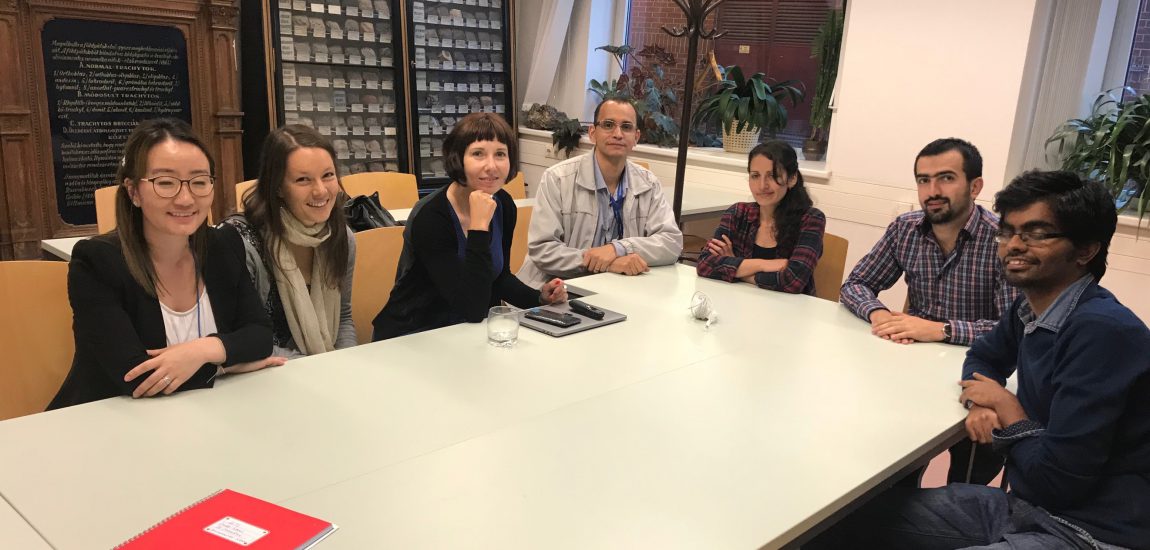
2017 EAG Distinguished Lecture Program: Lenny Winkel’s tour of Central and Eastern Europe
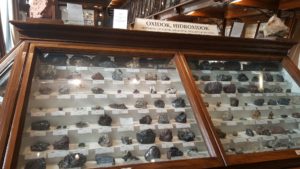
I was honored to hear that I had been selected as the 2017 EAG Distinguished Lecturer. As I love both research and teaching I was thrilled about the opportunity to talk about emerging research areas in geochemistry to students and scientists at research institutions in Eastern and Central Europe. My research focuses on global biogeochemical cycling of trace elements and on predicting the effects of climate and environmental changes on trace element distributions. As my work involves working across disciplines, I was happy to have been invited to four institutions with very different research foci.
I started the tour in Budapest, where I was very professionally and kindly hosted by Prof. Csaba Szabo from the Institute of Geography and Earth Sciences at Eötvös University, which was, I learned, founded in 1635 and is Hungary’s oldest university. I gave two lectures here: in the morning I talked about arsenic in groundwater and in the afternoon about my group’s work on the global selenium cycle. Before my first lecture, Prof. Tamás Weiszburg gave me and a small group of PhD students a tour of the university’s mineral and rock collection, which contains around 1000 different mineral types. After my talks there were a lot of questions and a lively discussion with the students, which we continued in the afternoon in a smaller round with international students from at least three different continents.
The next destination on my tour was Babes-Bolyai University in Cluj-Napoca, located in Transylvania, Romania. I was welcomed by my excellent host Prof. Calin Baciu from the Faculty of Environmental Science and Engineering, who I had already met when doing my postdoctoral research in the Marie Curie Research Training Network AquaTRAIN. Calin showed me the labs and introduced me to motivated PhD students and other staff in his group. In the afternoon, I gave my lecture on arsenic in groundwaters to an interested audience of staff and students. After the talk there were again many questions and I was impressed by the knowledge of the audience on arsenic in groundwater.
After a small tour in the beautiful historic part of Cluj and enjoying some delicious local food, I continued my journey in heavy rains via Bucharest to Prague where I was welcomed by Dr. Eva Přechová from the Czech Geological Survey. Eva was a fantastic host, she took me for a walk to Prague Castle on a cold but beautiful sunny afternoon. I learned that in contrast to what its name suggests, Prague Castle is not a single castle but a huge complex of impressive buildings of different architectural styles and is on the UNESCO World Heritage list. Eva told me a lot of interesting details about the castle’s history and triggered my interest in learning more about the fascinating history of Prague. I visited the City of Prague Museum where I saw the extensive Langweil realistic paper model of Prague, dating from 1826–1837.
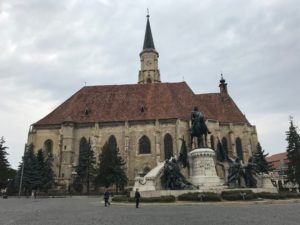
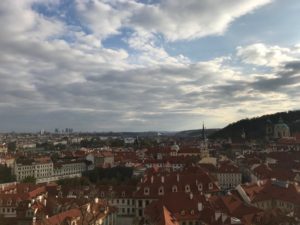
The following day, Dr. Martin Novák picked me up and we travelled by tram to the Czech Geological Survey office in the Barrandov Neighbourhood – a very appropriate location for a geological institute as Martin explained that the name “Barrandov” is derived from Joachim Barrande, a French geologist and palaeontologist who was one of the first researchers to describe trilobites. The institute is situated above a valley with beautiful rock formations and just opposite the famous Barrandov film studios. After my lecture, which was attended by a small but very interested audience of scientists, I had interesting discussions with Martin about his many projects and with Dr. Jana Kotková, who told me about her fascinating research on the provenance of the “Bohemian diamond”, Europe’s oldest real diamond. In the afternoon I got a tour of the labs and was impressed by how the technical staff kept older instruments up and running perfectly.
The next day I took the train from Prague and travelled to the last destination on my tour, the historic town of České Budějovice, also known as Budweis, in beautiful South Bohemia. After arriving in the old town and enjoying a traditional lunch in a microbrewery, I was picked up by Dr. Jiří Kaňa from the Biology Centre of the Czech Academy of Sciences and the University of South Bohemia. Jiří took me to the 16th century Black Tower, where we had a wonderful view over the town and the impressive Přemysl Otakar II square, one of the largest in the country. At the Biology Centre, I met Dr. Daniel Petráš who hosted my talk on predictions of trace element distributions over large spatial scales. Again, the audience asked many questions and Daniel and I continued the discussion over – of course – a glass of locally brewed beer. The next day, Daniel took me to another gem of Czech history, the UNESCO World Heritage town of Český Krumlov, which was the last cultural highlight and the end of the tour.
I would like to thank all my hosts for taking time to show me around their cities and institutions and for introducing me to their colleagues and students. I had very stimulating discussions not only about science, but also about academic career paths and their challenges and opportunities. Meeting so many enthusiastic and talented young researchers was certainly a highlight of the tour. I am also very grateful to the EAG, and the Training and Outreach Committee in particular, for giving me the opportunity to go on this lecture tour. Last but not least, I would like to thank Marie-Aude for all her logistical support and help with organizing the visits.
Videos of the three lectures ‘Arsenic contamination of groundwaters’, ‘Global biogeochemical cycling of selenium’ and ‘Predicting broad-scale environmental distributions of trace elements’ are available at www.eag.eu.com/outreach/dlp.
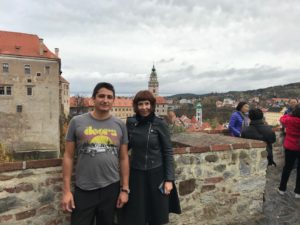
About the author:
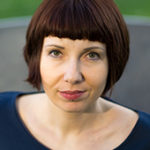
Prof. Dr. Lenny H.E. Winkel is Assistant Professor at ETH Zurich (Swiss Federal Institute of Technology in Zurich) and group leader at Eawag (Swiss Federal Institute of Aquatic Science and Technology) in Duebendorf, Switzerland. Her current research is focused on trace elements with important health impacts, and more specifically on the biogeochemical cycling of these elements from the molecular to the global scale. Furthermore, her research focuses on predicting effects of climate and environmental changes on the cycling and environmental distributions of these trace elements.
